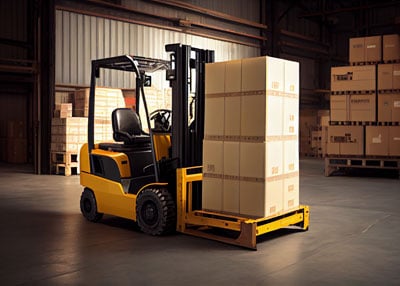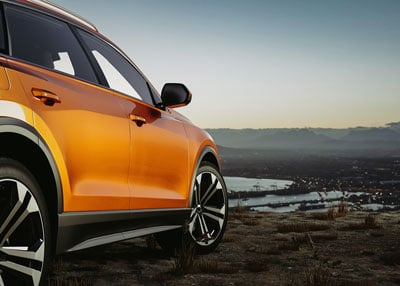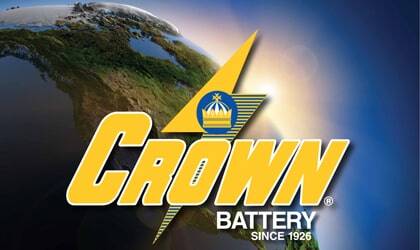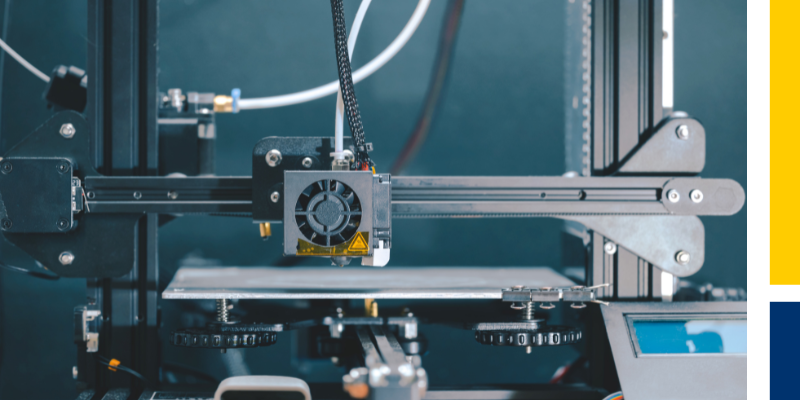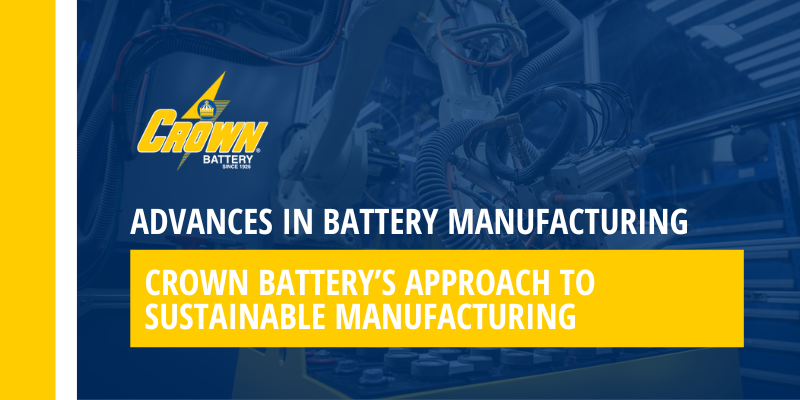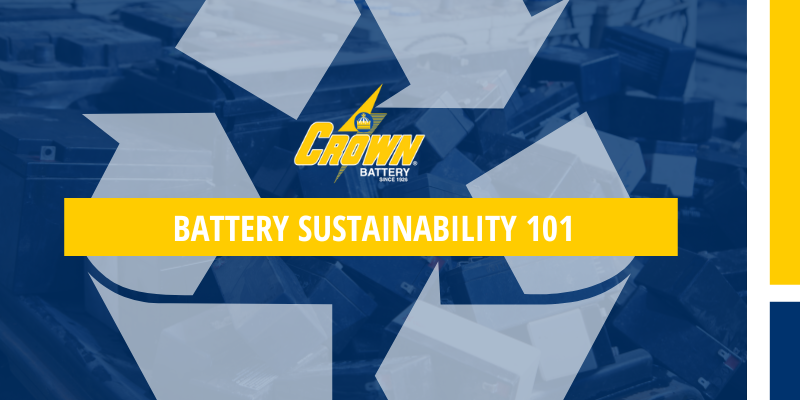“NASA uses our 3D-measuring FARO arm to replicate space shuttle repair parts… in space”
When astronauts need to recreate a part for the International Space Station, they can’t just order it from their local distributor or online -- because, of course, they’re in space.
With their lives floating in the balance, astronauts can’t “wing it” or depend on 2-dimensional measuring tools to create 3-dimensional parts.
That’s why they turn to the 3D-measuring FaroArm.
And back on Earth, Crown Battery’s scientists and engineers use the FARO arm to 3D-map and inspect critical supplier parts and manufacturing equipment – to ensure they meet or exceed our engineering standards.
Advanced R&D like this is critical to innovating and evolving battery technology – and ensuring you get longer-lasting, better-performing, lower-waste batteries.
When you need dependable batteries, last century’s R&D tools aren’t enough.
But while most batteries look similar and share similar chemistries, there’s a chasm between how they’re engineered and assembled – and it impacts your battery ROI, maintenance, and dependability.
Modern batteries aren’t designed solely in the physical world.
Many conventional R&D labs are bottlenecked – they’re waiting for prototype parts from machine shops. It can take weeks before they get machined prototypes and start testing.
Meanwhile, Crown Battery uses hybrid R&D and engineering – combining the best of hands-on and digital development.
Yes, we still perform thousands of laboratory tests and monitor (and teardown) fleets of real-world tester batteries.
3D modeling helps us get to proof of concept faster – by letting us brainstorm and test more ideas before focusing on promising improvements.
Crown’s 3D printer recreates test and repair parts, improving accuracy and speeding up R&D: It allows us to perform real-world testing and fixes faster and more precisely.
These tools help our engineers solve battery problems creatively... turn promising designs into test-ready prototypes overnight…. and test more designs, more thoroughly.
3D measurement eliminates trial-and-error “guesstimates” common to hand tools
Enter: The FARO arm.
It looks like it’s from a space-age future.
Weighing just 20 pounds, it measures a few feet (about a meter or less) tall…
… but it’s more expensive than many cars and makes our favorite tape measures look like toys.
Crown Battery invested in this coordinate measurement machine (CMM) because it does what few tools on Earth (or in space) can do:
The FARO arm captures the shape of parts in 3D, in real time.
And it’s so precise, it allows you to measure contours or objects thinner than a single sheet of paper.
3D measurement allows Crown’s engineers to measure and fix nonconforming parts in great detail with high accuracy. Then, we show these to suppliers and explain exactly what needs to be corrected.
More clarity and better communication. More accurate measurements.
We even carry the FARO arm around our manufacturing plant to inspect equipment and tooling. That eliminates production problems so that we can build better batteries.
Also on the International Space Station (and in Crown Battery’s R&D lab): 3D printers
Unlike the Space Station, Crown has traditional machining equipment on-site, and great local machine shops can build parts, too.
However, our 3D printers often help us print plastics faster and cheaper – for prototypes, R&D, and tooling. They even allow us to print designs that are impossible with traditional equipment. That allows us to explore more creative solutions to engineering problems.
Here’s how Crown’s 3D printing works:
- Build 3D models of parts in SolidWorks, our computer-aided design (CAD) program.
- Convert the format and download the file to the 3D printer.
- Set up parameters such as density and thickness.
- The 3D printer heats up and loads a spool of plastic string into the printer.
- This material cools and is moved to create shapes.
- The printer builds the final product layer by layer.
- The part is ready within hours – or for larger objects, a day or two.
Why 3D printing?
With 3D printing, we can draw, model, and redesign parts as much as we want. And rather than relying solely on computer models, we can test physical parts in the laboratory and the real world.
This approach is much faster than conventional methods because we don’t have to wait days or weeks for parts to return to us. And that means we can complete R&D projects, test new ideas and theories, and fix problems faster.
Of course, there’s a downside: 3D printing only lets us print plastics, reducing the finished strength compared to metal. And the result is less smooth, with imperfect dimensions.
But overall, 3D printing helps us design, experiment with, and build better products – and continue improving our performance.
3D R&D is just the beginning
At our ISO 9001:2015-certified factory, we use robotics for production stages that humans struggle to perform precisely – improving safety and quality.
For instance, our Intercell welding provides over 3,900 more adjustments than traditional welding. And our AI vision systems catch mistakes that humans could miss.
Finally, all our batteries feature a 250+ point quality inspection – to help ensure Crown batteries perform as well in the field as they do in the laboratory.
What’s next?
We’ve replaced last century’s 2D measurements with astronaut-trusted 3D accuracy and reliability – and other innovative R&D tools that didn’t even exist just decades ago.
But you don’t have to work for NASA or Crown Battery to benefit from this technology.
Today, you know how to compare batteries’ engineering – and how computer-aided, 3D engineering improves battery life and uptime.
To learn more about how to compare battery manufacturing techniques, read “Unveiling Battery Costs: Construction's Impact on Performance.”
And for help choosing your next Crown batteries, find your local battery distributor here.

